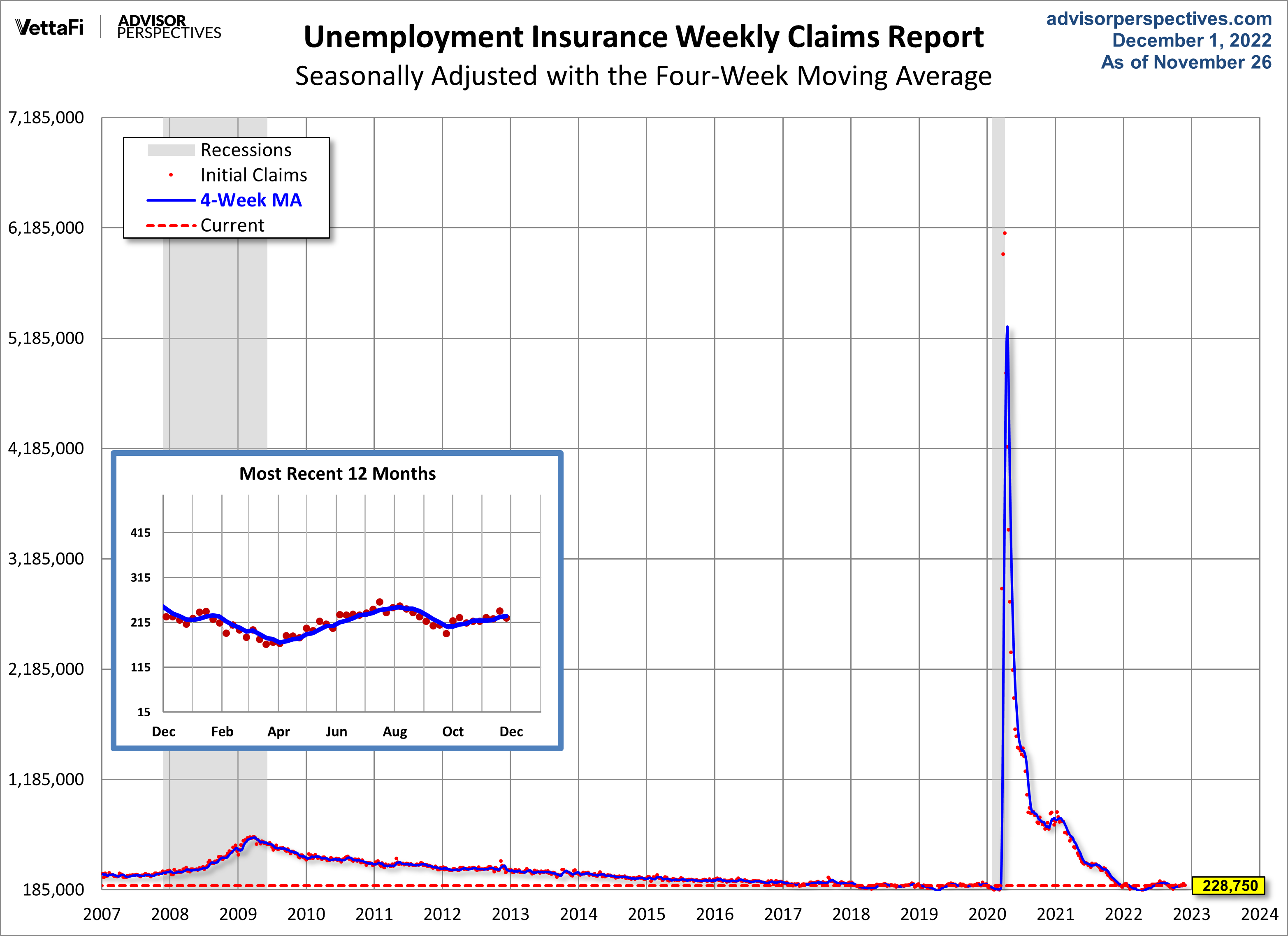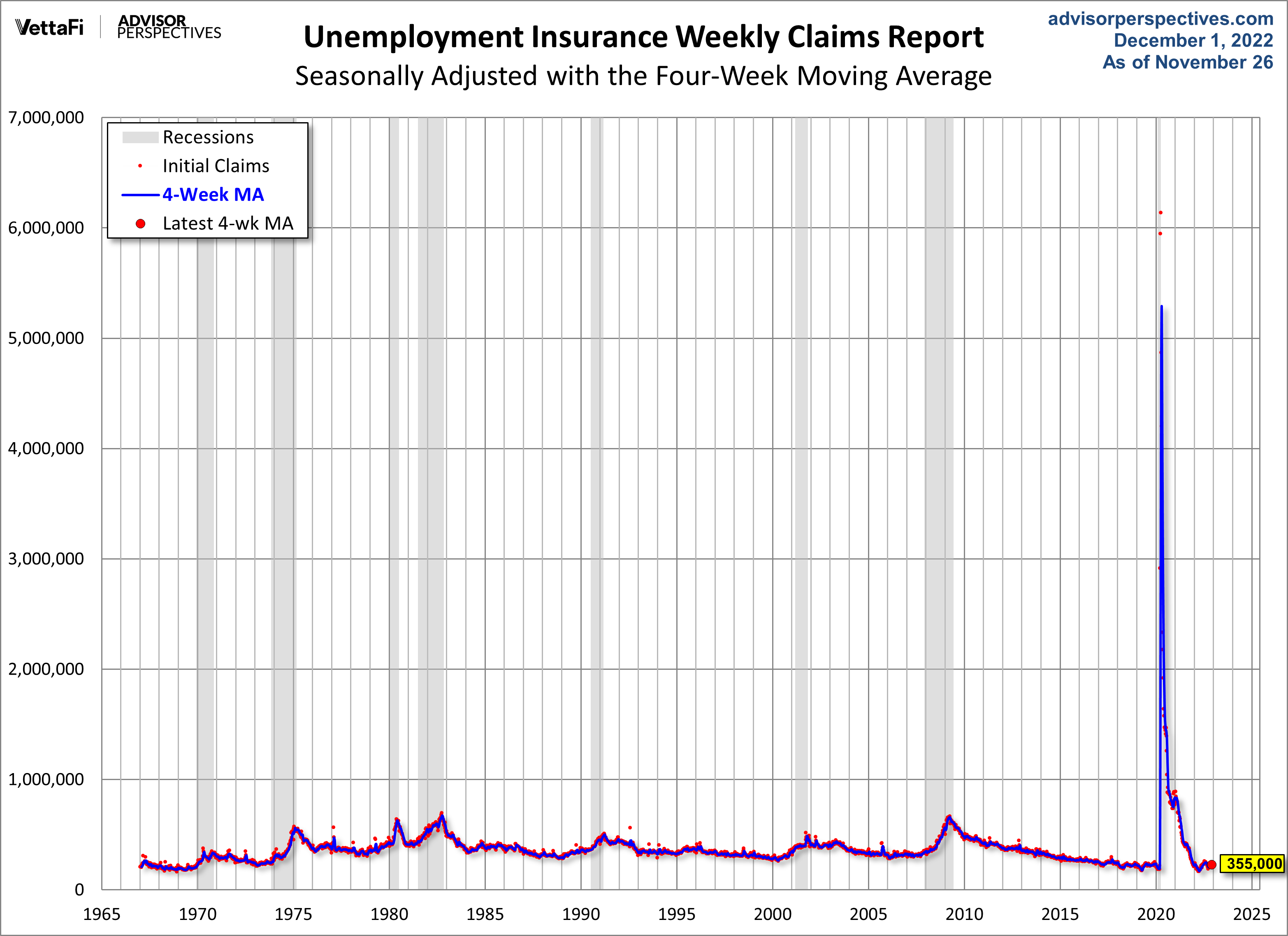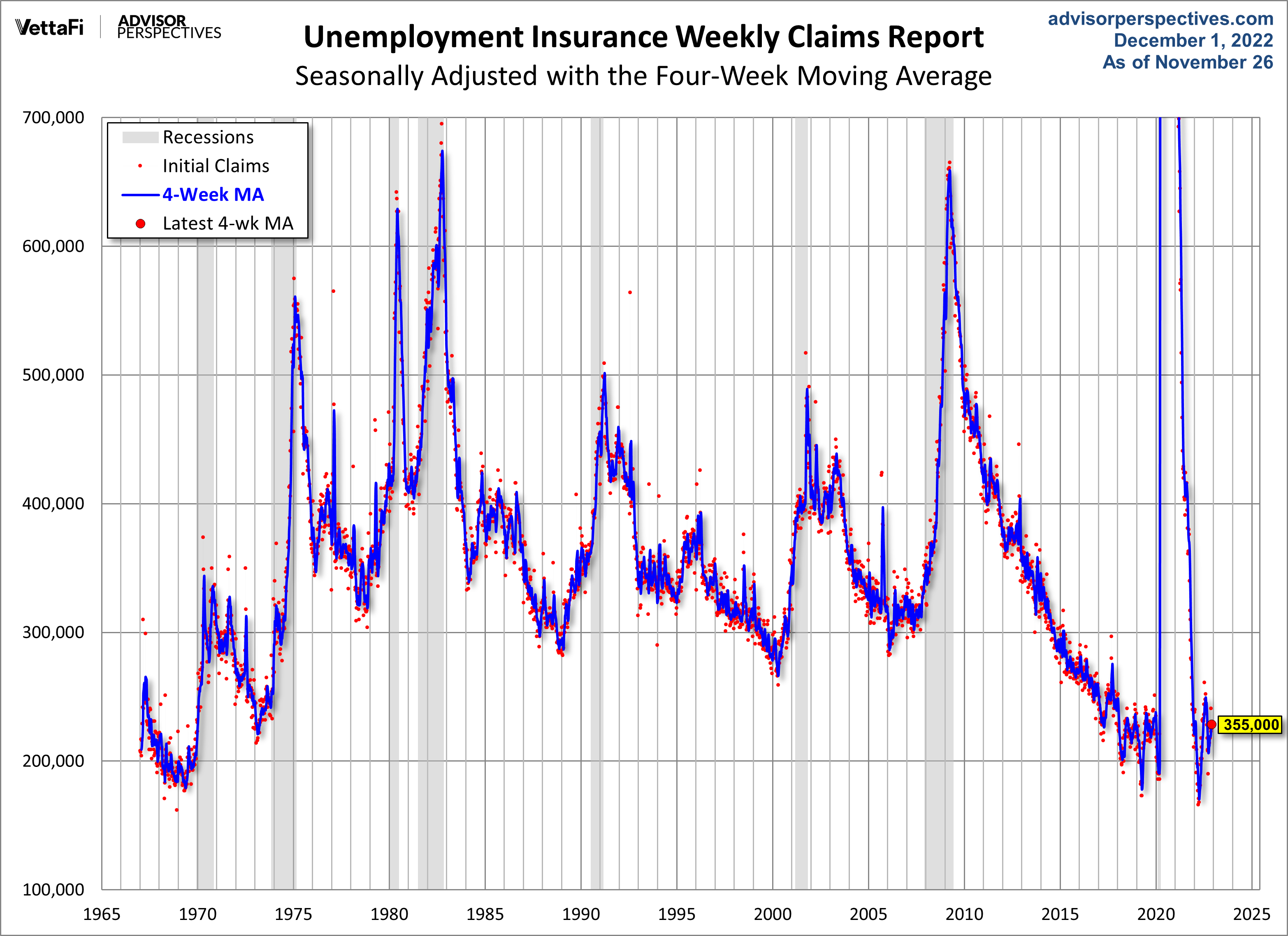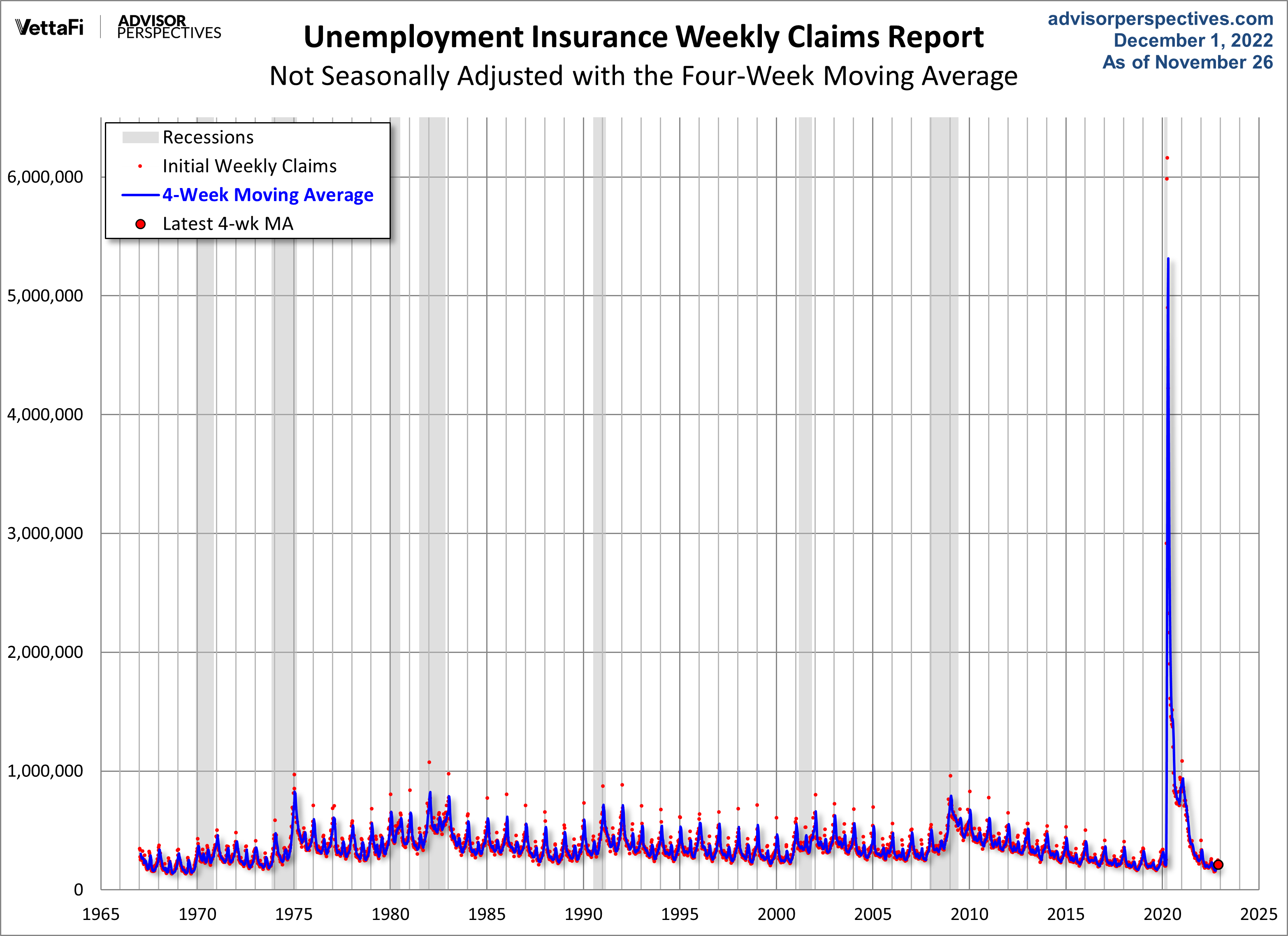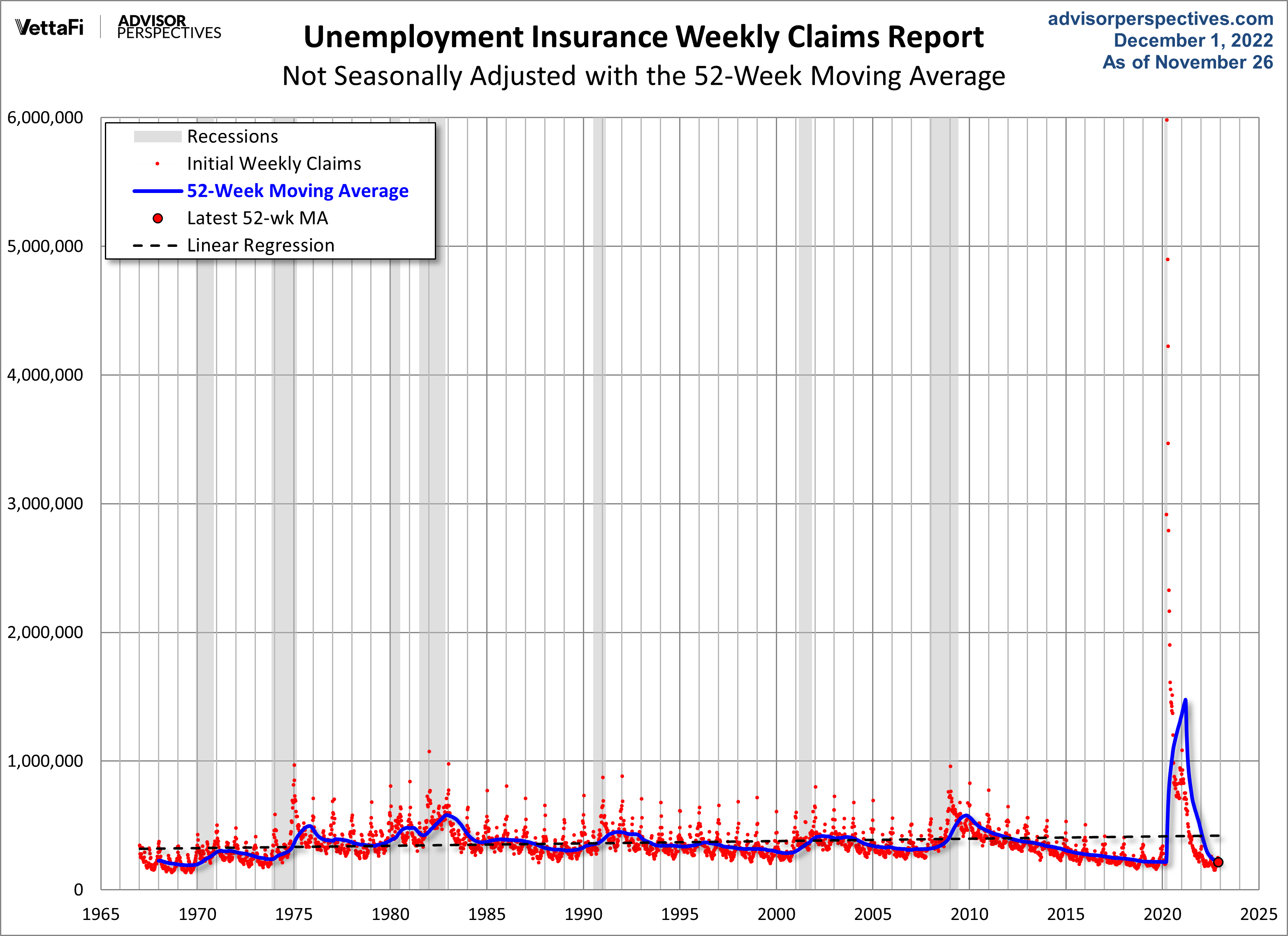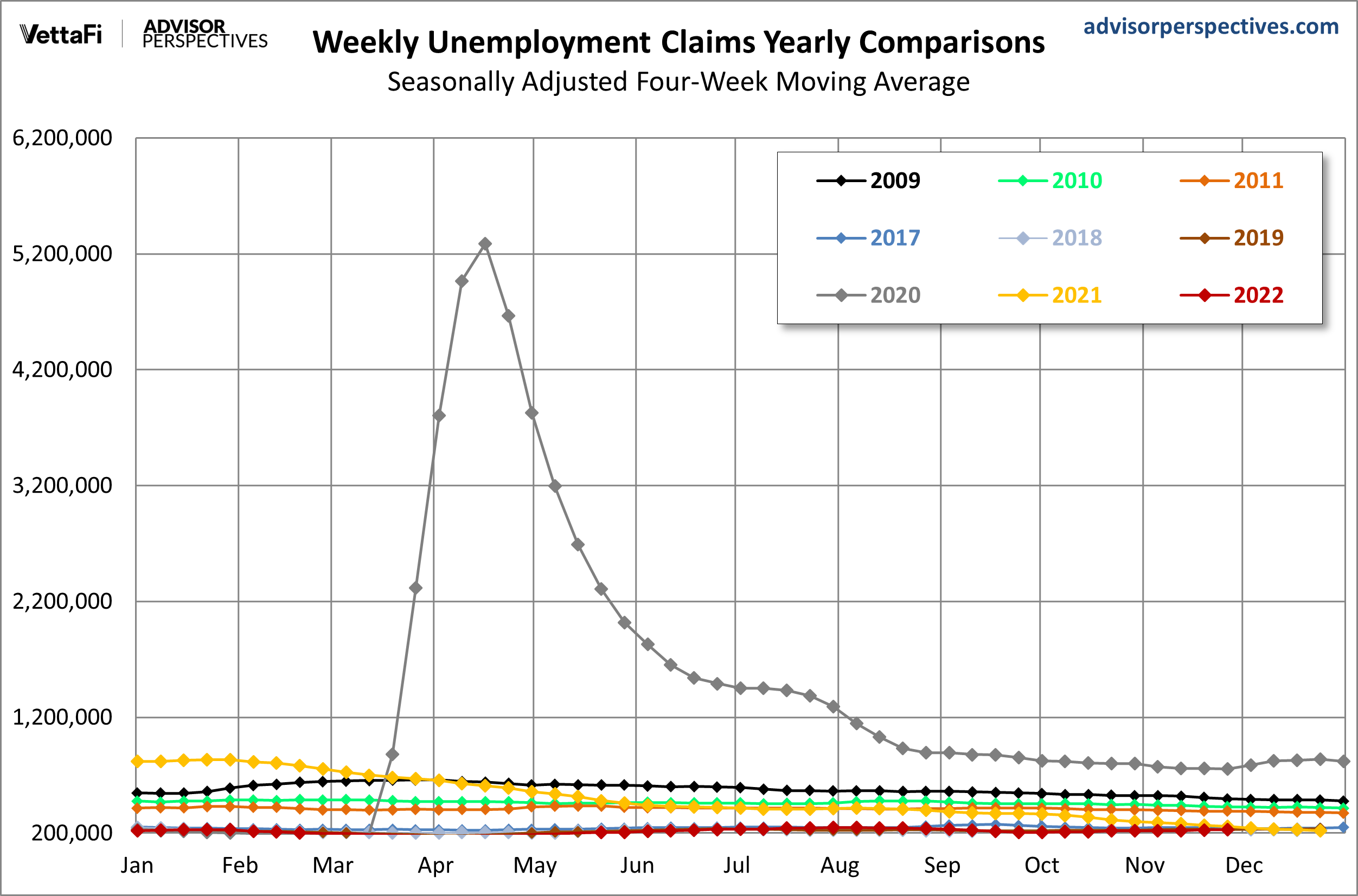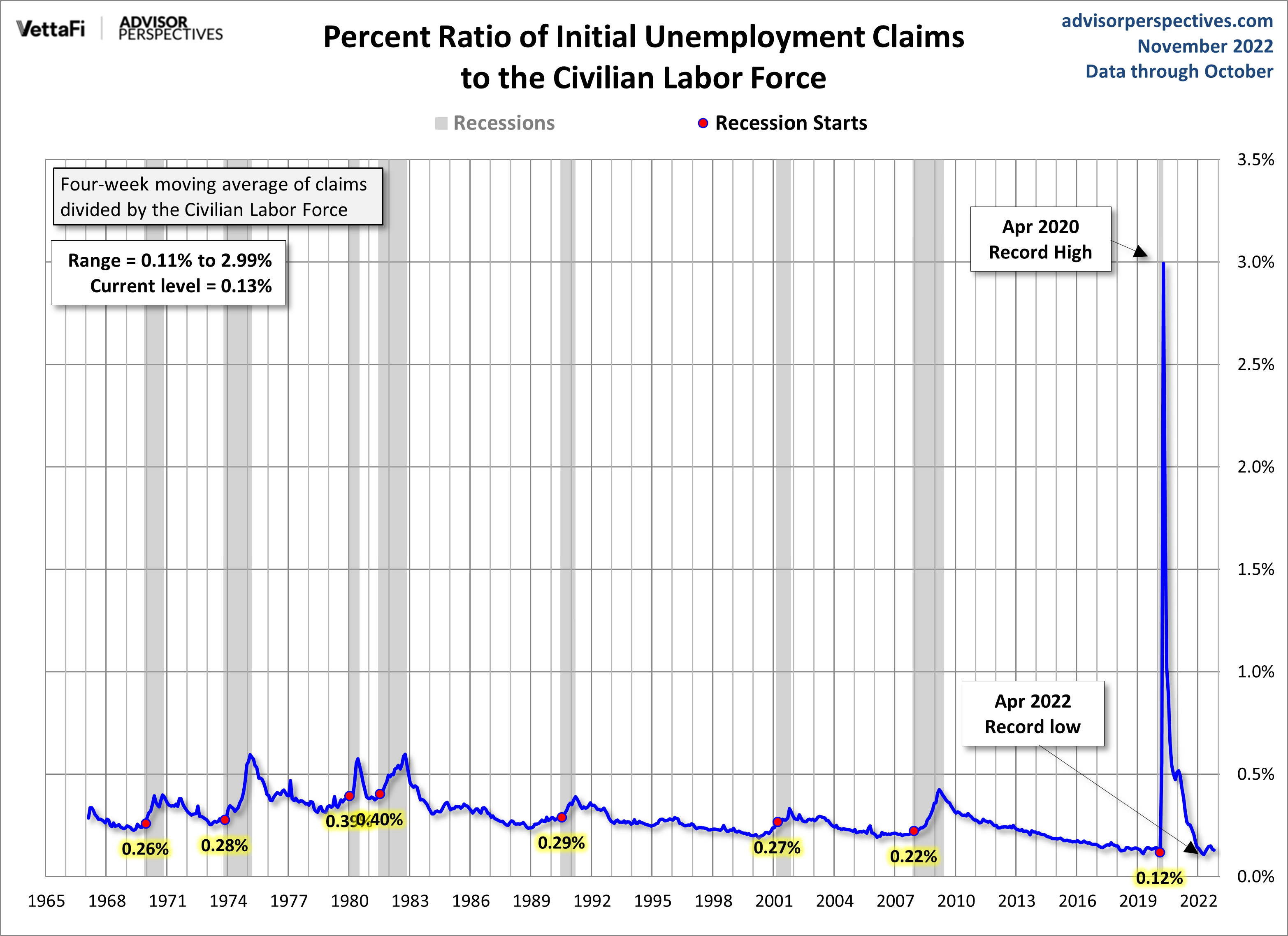Weekly Unemployment Claims: Down 16K, Beats Forecast
Here is the opening statement from the Department of Labor:
In the week ending November 26, the advance figure for seasonally adjusted 16,000 from the previous week's revised level. The previous week's level initial claims was 225,000, a decrease of was revised up by 1,000 from 240,000 to 241,000. The 4 week moving average was 228,750, an increase of 1,750 from the previous week's revised average. The previous week's average was revised up by 250 from 226,750 to 227,000.
The advance seasonally adjust ed insured unemployment rate was 1.1 percent for the week ending November 19, unchanged from the previous week's unrevised rate. The advance number for seasonally adjusted insured unemployment during the week ending November 19 was 1,608,000, an increase of 57,000 from the previous week's unrevised level of 1,551,000. The 4 week moving average was 1,538,750, an increase of 30,250 from the previous week's revised average. The previous week's average was revised down by 1,250 from 1,509,750 to 1,508,500.
This morning's seasonally adjusted 225K new claims, down 16k from the previous week's revised figure, was better than the Investing.com forecast of 235K.
Here is a close look at the data over the decade (with a callout for the past year), which gives a clearer sense of the overall trend.
As we can see, there's a good bit of volatility in this indicator, which is why the 4-week moving average (the highlighted number) is a more useful number than the weekly data. Here is the complete data series.
Here's a copy of the above chart, but zoomed in, so the COVID spike isn't as prominent.
The headline Unemployment Insurance data is seasonally adjusted. What does the non-seasonally adjusted data look like? See the chart below, which clearly shows the extreme volatility of the non-adjusted data (the red dots). The 4-week MA gives an indication of the recurring pattern of seasonal change (note, for example, those regular January spikes).
Because of the extreme volatility of the non-adjusted weekly data, we can add a 52-week moving average to give a better sense of the secular trends. The chart below also has a linear regression through the data.
Here's a look at a sample of year's claims going back to 2009.
For an analysis of unemployment claims as a percent of the labor force, see this regularly updated piece The Civilian Labor Force, Unemployment Claims, and the Business Cycle. Here is a snapshot from that analysis.
More By This Author:
Cryptocurrencies Through Wednesday, Nov. 30Pending Home Sales Slid In October For Fifth Consecutive Month
Q3 GDP Second Estimate: Real GDP At 2.3%

